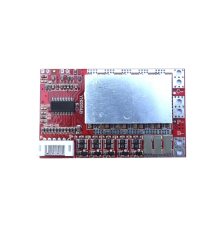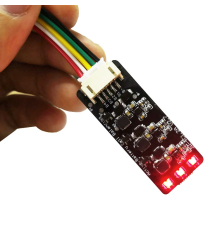Lithium-ion battery (Li-ion) is a type of electric battery that is widely used in modern consumer electronics and finds its application as a power source in electric vehicles and energy storage devices in power systems. It is the most popular type of battery in devices such as cell phones, laptops, digital cameras, camcorders and electric vehicles.
Types of lithium-ion batteries
Depending on the chemical composition and device, lithium-ion batteries are divided into types that differ greatly in consumer qualities:
Lithium cobalt (ICR)
This variety has the highest capacity, but is demanding on working conditions and has a very limited resource.
- The operating voltage range is from 3 to 4.2 V.
- The highest specific energy intensity - up to 250 Wh/kg,
- Peak discharge current - no more than two capacities (that is, a 2 Ah battery has a permitted current of 4 A),
- Continuous discharge current - no more than one capacity.
- Long term battery storage temperature: -5°C at 40-50% charge.
Lithium-cobalt batteries are explosive and can ignite if overheated or deep discharged. For these reasons, they are usually equipped with a protective board and are labeled Protected.
- Discharge voltage - not lower than 3 V. Explosive if the case is damaged, they age quickly (average life is 3-5 years,
- In "charge-discharge" cycles - no more than 500).
- High current charging is undesirable.
- Extremely toxic if ignited.
Lithium manganese (IMR or INR)
More durable and safer than cobalt, high current charging is acceptable.
- Operating voltage range: 2.5 to 4.2 V.
- Specific energy intensity: 140 - 150 Wh/kg.
- Resource: about 5-6 years - up to 1000 charge-discharge cycles.
- High current under load: up to 5 capacities.
- The discharge limit is 2.5 V, however, a decrease in the resource is possible.
INR batteries rarely have a protection board, but the charging circuit is always voltage limited.
- Inoperable below: -10 °C.
- Safe enough to use, do not explode or ignite.
- They have low self-discharge.
Iron phosphate batteries (LiFePO4, LiFe, LFP, IFR)
The latest generation with the greatest resource.
- Operating voltage range: 2 to 3.65 V,
- Rated voltage: 3.2V.
- Specific energy content: approx. 150 Wh/kg.
- Resource: 10-20 years,
- Approximately 1500-3000 charge-discharge cycles (up to 8000 in mild conditions).
High load current (up to 10 capacities) and stable discharge voltage are ideal for electric vehicles, rovers, bicycles, and similar applications.
- A discharge near the lower voltage limit (2 V) can reduce the resource.
- High current charging with safety is allowed.
- Under the most severe operating conditions, they do not emit gas, do not explode or ignite.
Lithium titanate batteries (LTO)
Highest durability and wide operating temperature range.
- Operating voltage range: 1.6 to 2.7 V, nominal voltage: 2.3 V.
- Specific energy consumption: approximately 100 Wh/kg.
- Resource: more than 15,000 charge-discharge cycles.
- Temperature range: -60 °C to +60 °C.
It has a very low resistance, allowing the use of ultra-fast charging, and low self-discharge, approximately 0.02% per day.
Technical indicators
The main indicators of elements, depending on the chemical composition, are within the following limits:
1. Single cell voltage:
- maximum: 4.2 V (or 4.35 / 4.40 V for high voltage);
- minimum: 2.5 V (or 2.8 / 3.0 V for high voltage);
2. specific energy consumption: 110…270 Wh/kg;
3. Internal resistance: 4…15 mOhm;
4. The number of charge-discharge cycles to reduce the capacity to 80%: 600;
5. Fast charge time: 1 hour;
6. Self-discharge depends on storage temperature and state of charge. At 25°C and 100% charge ≈1.6% per month;
7. Load current relative to capacity C, presented in Ah:
- constant: up to 5C;
- pulse: up to 50С;
- optimal: up to 1C;
8. Operating temperature range: -20°C to +60°C (optimum +23°C);
Battery Protectors
Almost always, a PCM-board (Protection Circuit Module) controller is built into the battery case, which manages charging and protects the battery from over-charge voltage, over-discharge and over temperature, leading to premature degradation or destruction. Also, this controller can limit the current consumption, protect against short circuits. However, keep in mind that not all batteries are protected. Manufacturers may not install it in order to reduce cost, weight, and in devices that have a built-in protection controller, batteries (for example, laptops) use batteries without a built-in protection board.
Lithium batteries have special requirements when connecting multiple cells in series. The chargers for such multi-cell batteries or the batteries themselves are provided with a cell balancing circuit. The point of balancing is that the electrical properties of the cells may differ slightly, and some cell will reach full charge / discharge before others. At the same time, it is necessary to stop charging this cell, while continuing to charge the rest, since overdischarging or overcharging lithium-ion batteries disables them. This function is performed by a special unit - the balancer BMS-board (English Battery Management System). It shunts the charged cell so that the charge current goes past it. Balancers simultaneously perform both the function of a protection board in relation to each of the batteries, and the battery as a whole.
Chargers can support the final charge voltage in the range of 4.15-4.25V.
There are lithium-ion and lithium-polymer batteries of AA and AAA sizes with a voltage of 1.5V. They have not only a protection circuit, but also a built-in electronic voltage converter (DC-DC converter). The difference between such batteries is a stabilized voltage at the contacts of 1.5V, regardless of the operating voltage of the battery cell itself and its instant reset when the lithium cell is discharged to the lower permissible limit and the over-discharge protection is triggered. These batteries can be confused with similarly sized 14500 and 10440 3.7V batteries, as well as non-rechargeable disposable lithium batteries. All of them are marked differently.
Internal arrangement
A lithium-ion battery consists of electrodes (cathode material on aluminum foil and anode material on copper foil) separated by a porous separator impregnated with electrolyte. The package of electrodes is placed in a sealed case, the cathodes and anodes are connected to the current collector terminals. The body is sometimes equipped with a safety valve that relieves internal pressure in case of emergency or violations of operating conditions. Lithium-ion batteries differ in the type of cathode material used. The charge carrier in a lithium-ion battery is a positively charged lithium ion, which has the ability to intercalate (intercalate) into the crystal lattice of other materials (for example, into graphite, oxides and metal salts) with the formation of a chemical bond, for example: into graphite with the formation of LiC6, oxides (LiMnO2) and metal salts (LiMnRON).
Initially, metallic lithium was used as negative plates, then coal coke. Later, graphite began to be used. The use of cobalt oxides allows batteries to operate at much lower temperatures, increases the number of discharge / charge cycles of one battery. The spread of lithium-iron-phosphate batteries is due to their relatively low cost. Lithium-ion batteries are used complete with a monitoring and control system - BMS (battery management system) - and a special charge / discharge device.
There are currently three classes of cathode materials used in the mass production of lithium-ion batteries:
- lithium cobaltate LiCoO2 and solid solutions based on isostructural lithium nickelate;
- lithium-manganese spinel LiMn2O4;
- lithium ferrophosphate LiFePO4.
Electrochemical circuits of lithium-ion batteries:
- lithium-cobalt LiCoO2 + 6C → Li1-xCoO2 + LiC6;
- lithium ferrophosphate LiFePO4 + 6C → Li1-xFePO4 + LiC6;
Due to low self-discharge and a large number of charge / discharge cycles, Li-ion batteries are most preferred for use in alternative energy. At the same time, in addition to the I&C system, they are equipped with inverters (voltage converters).
Advantages
- Low self-discharge.
- High current output.
- A large number of charge-discharge cycles.
- Maintenance free.
Flaws
Commonly used lithium-ion batteries are often extremely flammable when overcharged, improperly charged, or mechanically damaged.
- Flammable;
- Lose performance when overdischarged;
- Lose capacity in the cold.
1 reviews / Write a review





